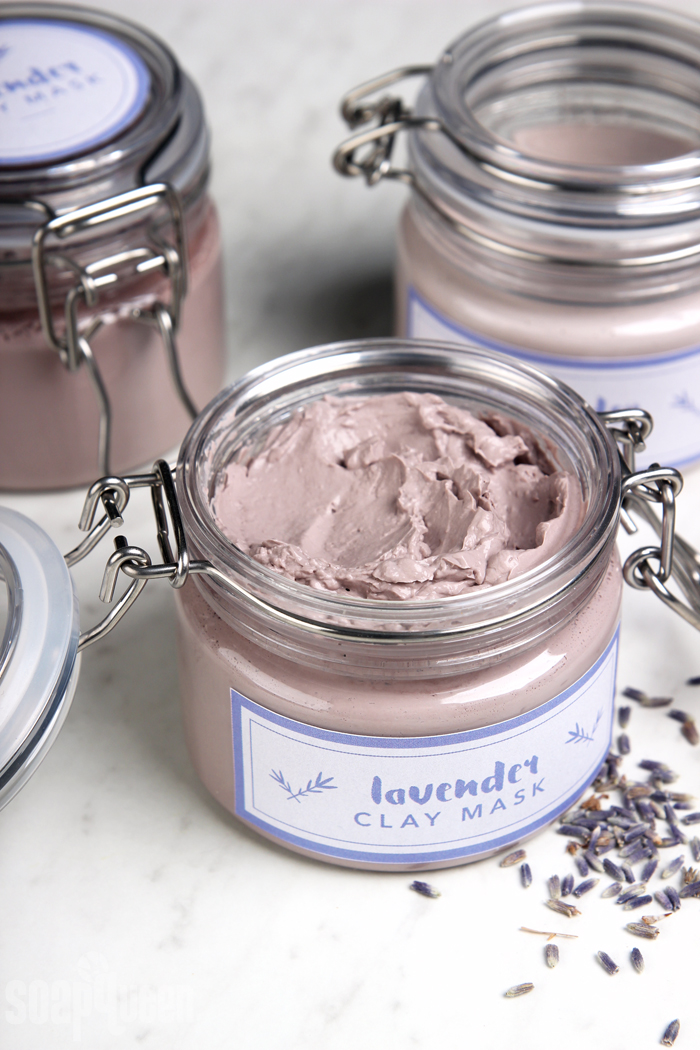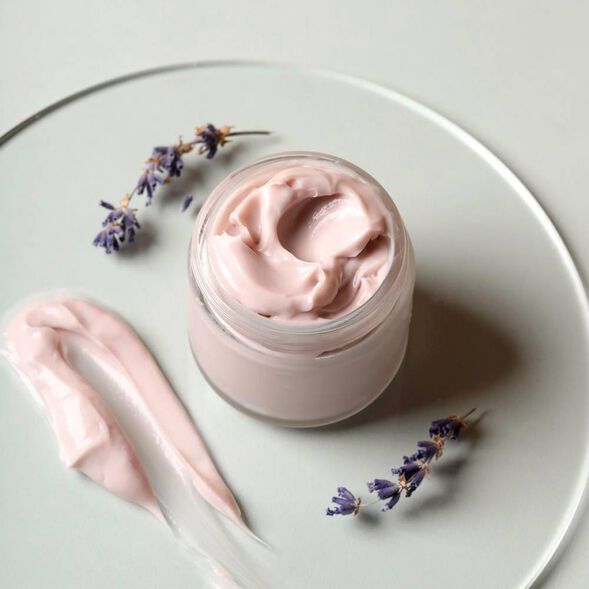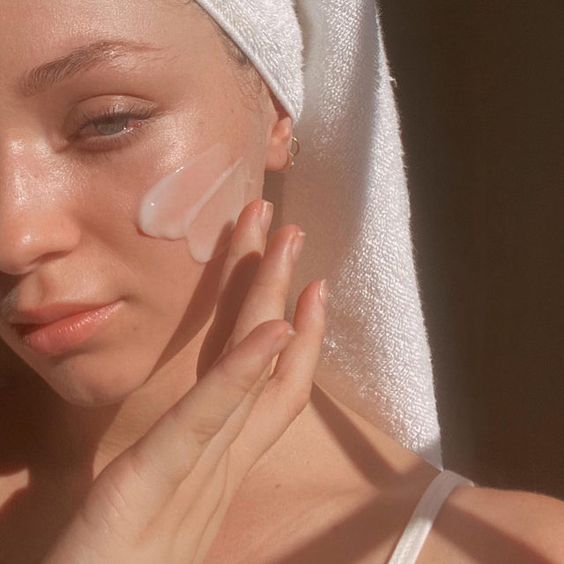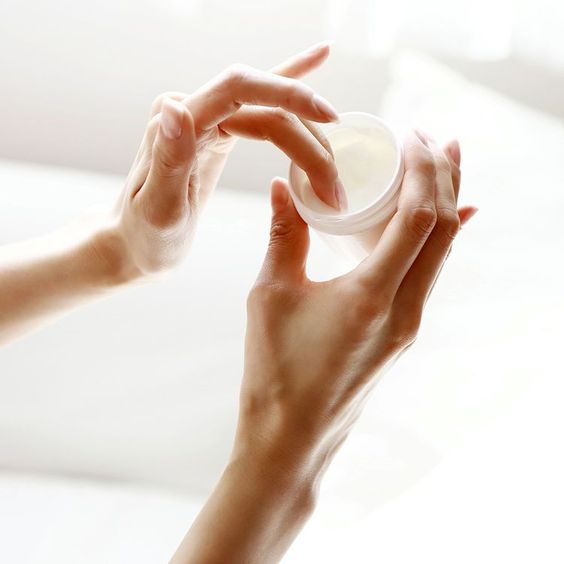Clay masks are often tailored for oily skin due to their oil-absorbing properties, but this Lavender Clay Face Mask is specially designed for dry and sensitive skin. Despite the ingredient list, it’s surprisingly simple to create! The process of blending clay, water, and oil into a luxurious mask is both satisfying and rewarding.
This recipe features a rich combination of argan and avocado oils to deeply moisturize the skin. Argan oil, celebrated for its nourishing qualities, is packed with vitamins A and E. To achieve its smooth, creamy, lotion-like texture, the oils and distilled water are combined with Polawax Emulsifying Wax and BTMS-50 Conditioning Wax. These emulsifiers ensure a stable blend, preventing the oil and water from separating.

INGREDIENTS
- Four 8 oz. Short Bail Jars
- 21.4 oz. Distilled Water
- 1 oz. Argan Oil
- 1.3 oz. Avocado Oil
- 1 oz. Polawax Emulsifying Wax
- 0.8 oz. BTMS-50 Conditioning Wax
- 3.5 oz. Kaolin Clay
- 1 oz. Purple Brazilian Clay
- 2 mL Lavender 40/42 Essential Oil
- 0.5 oz. Evening Primrose Extract
- 0.2 oz. Optiphen
INSTRUCTIONS
Prepare Equipment: Disinfect all utensils, including mixing containers, a stick blender, spoons, and spatulas, by dipping them in a 5% bleach water solution and letting them dry. This step ensures your tools are free from bacteria and microbes, creating a safe environment for your mask.
Prepare the Clays: Measure 3.5 oz. of kaolin clay and 1 oz. of purple Brazilian clay. You can combine them in one container or keep them separate for individual addition later.
Heat the Oils and Waxes: In a heat-safe container, combine avocado oil, argan oil, Polawax, and BTMS-50. Heat the mixture in the microwave in 30-60 second bursts until the waxes are fully melted. Handle carefully, as the container will be hot. Set aside.
Heat the Water: In a separate large container, heat the distilled water to 160-170°F using a microwave or stovetop. Recheck the water volume after heating, as some may evaporate, and top it up to ensure you have exactly 21.4 oz.
Combine Water and Oils: Ensure the oil and wax mixture and the heated water are between 160-180°F. If the oils have cooled, reheat them. Place the stick blender into the water and burp it to release air bubbles. Pour the melted oil mixture into the water, scraping the container to include all ingredients. Pulse the stick blender until the mixture turns milky, indicating emulsification. Blend for about a minute.
Add the Clays: Gradually add spoonfuls of kaolin clay (or the kaolin and purple Brazilian clay mix), pulsing the stick blender after each addition. Continue until all the clay is fully incorporated. Blend for 1-2 minutes, scraping down the sides of the container to ensure an even mix.
Cool and Add Preservatives: Once the mixture cools to 130-140°F, add the Optiphen, Lavender 40/42 Essential Oil, and evening primrose extract. Stick blend thoroughly, remembering to burp the blender, until all ingredients are well mixed.
Final Blend: If not yet added, incorporate the purple Brazilian clay and blend until the texture is smooth and uniform. Continue blending for a few more minutes to ensure full emulsification.
Fill and Cool: Pour the mixture into the bail jars. If bubbles form on the surface, spritz with 99% isopropyl alcohol. Leave the jars uncovered to cool for several hours, allowing the mask to set into a thick, lotion-like consistency. A slight skin may form on the surface as it dries.
USAGE INSTRUCTIONS

Apply a medium layer to clean, dry skin, avoiding the eye area. Let the mask sit for 10-15 minutes, then rinse with warm water. Washing afterward is optional. For dry skin, limit use to once per week.





